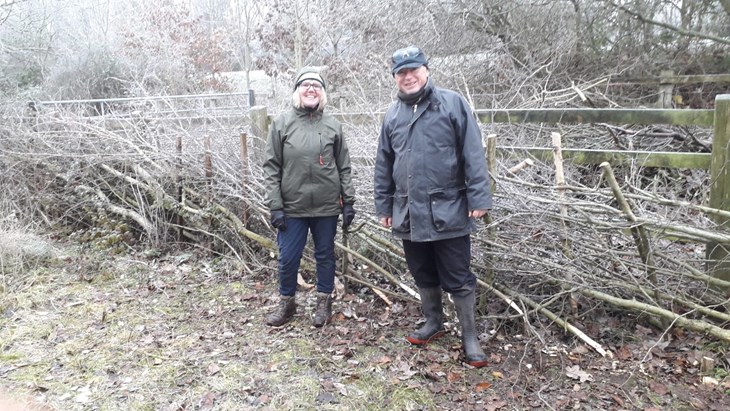A traditional country skill

One of the many important tasks that the Wild Ground volunteers undertake is hedgelaying to try and tackle disappearing hedgerows. Hedge laying takes place during the Autumn and Winter months when trees and shrubs are dormant, and birds have finished nesting.
Many of the Wild Ground Reserve Officers have undergone formal hedgelaying training to allow them to share this knowledge and skill with the volunteers. Non-invasive tools are used to practice this hundred-year-old country craft. Hedgelaying allows you to create a living fence, encouraging new growth.
A hedgerow includes both the hedge and its features such as banks, trees, walls, fences and gates. It may be ancient or newly planted, with a single species or many, and everything in between. It's estimated that 40% of UK hedges (95,000 miles) are ancient and or species rich according to the Woodland Trust.
Hedgerows provide a fantastic corridor for wildlife and offer great foraging and protection for small mammals and birds.
The Woodland Trust states that around 118,000 miles of hedgerows have disappeared since 1950, due largely to the intensification of agriculture. Recently Geraint and the Monday volunteer team have been laying hedges on our Broughton reserve.
Utilising this hundred-year-old country craft as part of our reserve management allows for the correct management of our hedgerows, an essential practice if we are to conserve our wildlife and landscapes for future generations.
Geraint and the Monday volunteer team have recently undertaken some hedgelaying at the Broughton Reserve.
